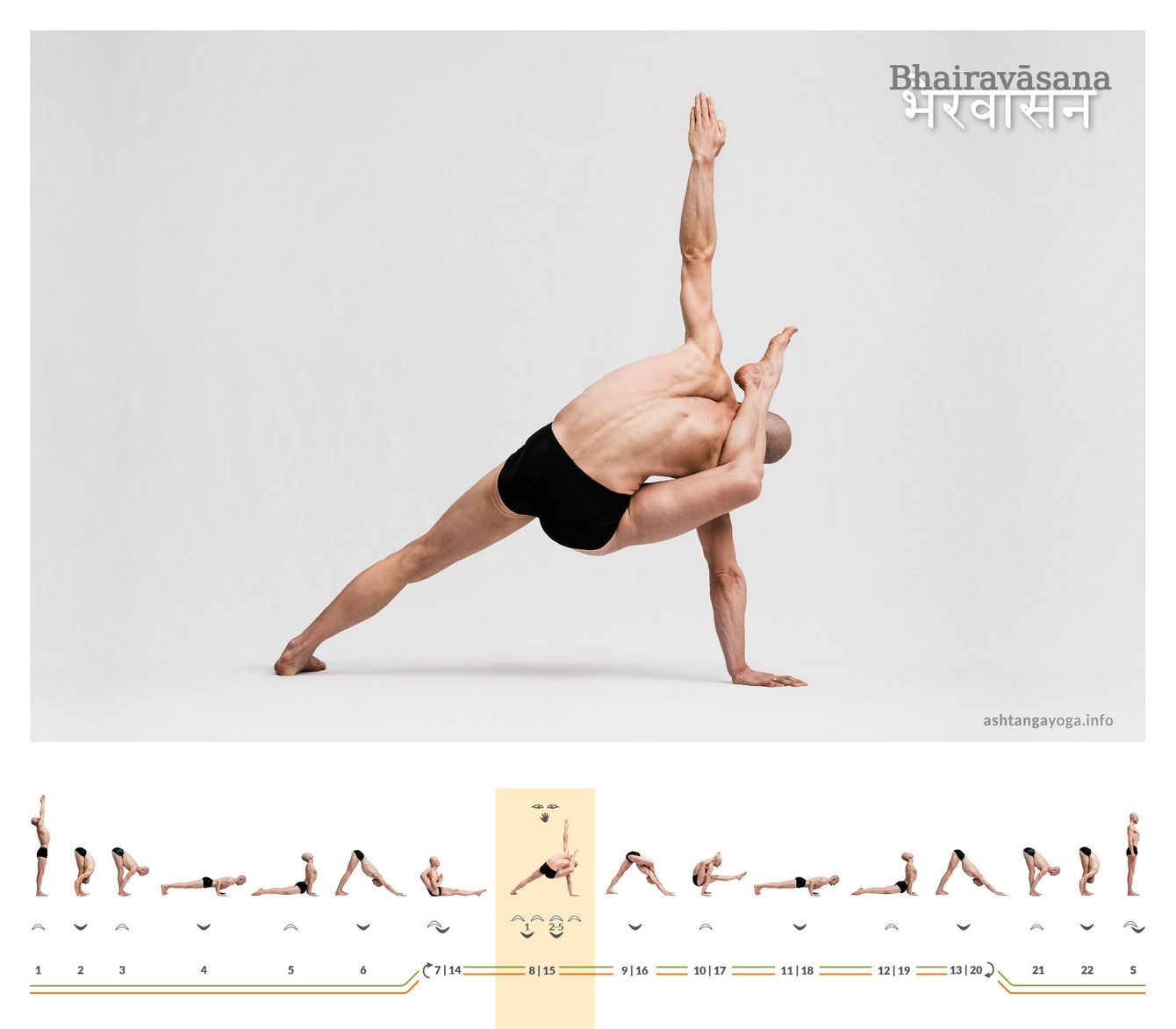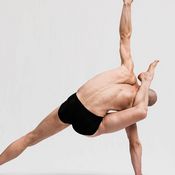

Legend: Bhairava is a mythological figure from Śiva. Literally, Bhairava means "the terrifying one" (from bhaya, fear).
The Kūrma Pūraṇa narrates a dispute between Brahmā and Viṣṇu. Both claimed the position of the supreme God. Śiva listened to their argument and became so angry at being ignored that he severed the middle of Brahmā's five heads.
After Śiva calmed down, he felt remorse because he had killed a Brahman. Therefore, Śiva roamed the world as an ascetic. He carried Brahmā's head as a begging bowl with him. Finally, he was able to cleanse his sin in the holy Ganges River.
The Kāpālika ascetics referred to this mythology by carrying a skullcap as a begging bowl and having another skull impaled on their wandering staff. The Kāpālika movement was significant in Tantrism and the emergence of Haṭha Yoga. Today, there is no direct continuation of this ascetic group in India.
In the traditional count: Start directly from the pose "downward-facing dog" from the previous sequence of movements.
Vinyāsa 7 - Inhalation, Exhalation:
Inhale as you jump from "Downward-Facing Dog" into a balancing position on your hands. While exhaling slowly, lower yourself, pushing your left leg through between your arms, and pass your right leg sideways over your right arm. With the concluding inhalation, place your foot behind your head and position your hands in front of your heart.
Vinyāsa 8 - Inhalation, Exhalation, Inhalation, 5 breaths, Inhalation:
Place your hands on the floor, lift yourself up as you inhale, briefly bringing your left shin towards your chin. Swing from here, exhaling, with your extended left leg backward. Place your right hand on the floor, initially keeping your left hand on your left thigh. Only with the inhalation, raise your left arm straight up. Follow your left arm with your gaze. Stay for five breaths. Then inhale again.
Vinyāsa 9 - Exhalation:
With the next exhalation, lower your left arm to the side of your thigh. In the same breath, place your arm forward and lift your pelvis upward, keeping your right foot behind your head.
Vinyāsa 10 to 13:
Follow the movement flow you are already familiar with until you come to a halt in "Downward-Facing Dog."
Vinyāsa 14 to 20:
Now repeat the entire movement flow (Vinyāsa 7 to 13) on the other side.
In the traditional count: Proceed directly into the movement flow of the next posture.
Effect: Bhairavāsana is another repetitive hip opener for even more flexibility. The side plank also develops stability in the core.
Fotograf: Richard Pilnick - www.richardpilnick.com


 Dr. Ronald Steiner
Dr. Ronald Steiner
Messages and ratings